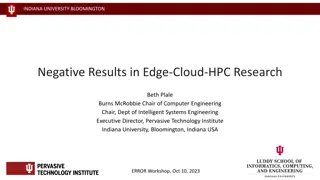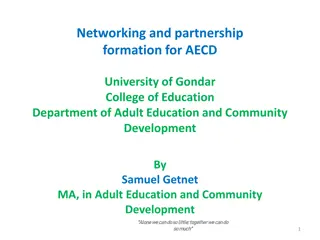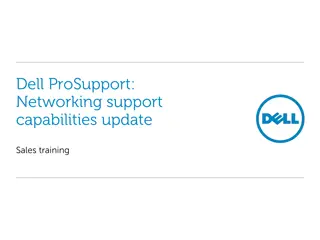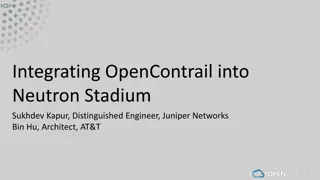Role of Theoretical Research in Networking Systems Development and Beyond
Theoretical research plays a pivotal role in advancing networking systems development and addressing complex challenges. From designing new systems to optimizing parameters, theoretical frameworks help bridge the gap between theory and practice, enabling the development of networks worthy of societal trust. By focusing on programmability and scalable data planes, researchers are tackling resource limitations and deploying efficient data structures to enhance network performance and security, with practical applications in various domains like analytics and monitoring.
Download Presentation

Please find below an Image/Link to download the presentation.
The content on the website is provided AS IS for your information and personal use only. It may not be sold, licensed, or shared on other websites without obtaining consent from the author.If you encounter any issues during the download, it is possible that the publisher has removed the file from their server.
You are allowed to download the files provided on this website for personal or commercial use, subject to the condition that they are used lawfully. All files are the property of their respective owners.
The content on the website is provided AS IS for your information and personal use only. It may not be sold, licensed, or shared on other websites without obtaining consent from the author.
E N D
Presentation Transcript
Role of Theoretical Research in Networking Role of Theoretical Research in Networking Systems Development and Beyond Systems Development and Beyond Jennifer Rexford Princeton University
Toward Networks Worthy of Societys Trust Networks are critical infrastructure But, they really were not designed for this Networks are multi-faceted Many interacting protocols and layers Complex applications and user behavior Competing institutions and malicious actors Networks are resource constrained Bandwidth, computation, memory, spectrum, Networks are too important (and too hard) to design without theory!
Making Theory Meet Practice Modeling existing systems Optimizing system parameters Designing new systems
Programmability Helps Theory Meet Practice! Controller top to bottom vSwitch vSwitch Switch OS Switch OS NIC NIC switch switch NIC NIC end to end
Challenges: Resource Limitations Limited depth Limited # bits Limited # rules Limited # registers and # of accesses Limited ALU operations
Efficient Data-Plane Data Structures Approximate analysis is fine Microbursts: size estimate for just the large flows DDoS: rough count for large #s of distinct sources Path performance: rough estimates for best paths Data structures can fit in data-plane registers Sketch (e.g., Bloom filter, count-min sketch, etc.) Small hash table (e.g., cache of the popular keys)
Deploying Data-Plane Data Structures Internet2 Programmable devices Barefoot Tofino switches FPGA-based network interface cards Practical deployments Princeton University campus AT&T backbone trial deployment ONF Aether 5G platform (prontoproject.org) Example use cases Microburst analytics Heavy hitter detection Round-trip time monitoring Neuroscience Institute Tofino https://p4campus.cs.princeton.edu/
Programming Language Abstractions Controller Network-wide goals (objectives and constraints) vSwitch vSwitch Switch OS Switch OS Compiler NIC NIC Per-device programs (measure, analyze, and control) switch switch NIC NIC
Conclusion Network systems need theoretical foundations So we can design networks worthy of society s trust Theory needs to meet practice So good ideas can see the light of day Deep programmability enables theory to meet practice Putting the functionality we want, where we want it Programmable networks also need a strong foundation Efficient data structures that run in the data plane Expressive programming abstractions and effective compilers
Example References Data-plane data structures Microbursts: https://www.cs.princeton.edu/~jrex/papers/conquest19.pdf Heavy hitters: https://www.cs.princeton.edu/~xiaoqic/documents/paper- PRECISION-ToN.pdf and https://www.cs.princeton.edu/~jrex/papers/carpe20.pdf Count distinct: https://www.cs.princeton.edu/~xiaoqic/documents/paper- BeauCoup-SIGCOMM20.pdf Performance: https://www.cs.princeton.edu/~jrex/papers/apocs20.pdf Language abstractions Traffic queries: https://www.cs.princeton.edu/~jrex/papers/sonata.pdf Path queries: https://www.cs.princeton.edu/~jrex/papers/pathquery16.pdf Performance-aware routing: https://www.cs.princeton.edu/~jrex/papers/contra20.pdf























